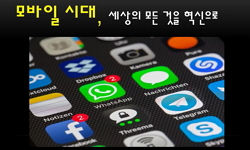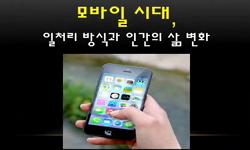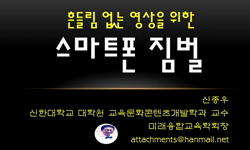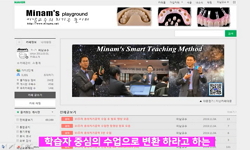시․공간의 제약을 뛰어 넘는 21세기 정보화 시대에서의 미디어 중독은 우리생활에 다양하고 깊숙이 자리잡고 있다. 그중 특히 손안의 컴퓨터, 이동형 멀티미디어인 스마트폰은 남녀노소를 ...
http://chineseinput.net/에서 pinyin(병음)방식으로 중국어를 변환할 수 있습니다.
변환된 중국어를 복사하여 사용하시면 됩니다.
- 中文 을 입력하시려면 zhongwen을 입력하시고 space를누르시면됩니다.
- 北京 을 입력하시려면 beijing을 입력하시고 space를 누르시면 됩니다.
초등학생의 스마트폰 사용현황과 중독실태에 대한 고찰 = A study on the present status of smartphone usage and addiction of elementary school students
한글로보기https://www.riss.kr/link?id=T13391031
- 저자
-
발행사항
부산 : 경성대학교 교육대학원, 2014
-
학위논문사항
학위논문(석사) -- 경성대학교 교육대학원 , 컴퓨터교육전공 , 2014. 2
-
발행연도
2014
-
작성언어
한국어
-
주제어
초등학생 스마트폰 사용 ; 스마트폰 중독 척도 ; 미디어 중독 ; 스마트폰
-
발행국(도시)
부산
-
형태사항
; 26 cm
-
일반주기명
지도교수: 김진천
- 소장기관
-
0
상세조회 -
0
다운로드
부가정보
국문 초록 (Abstract)
스마트폰의 중독적 사용으로 발생하는 각종 부작용에 대한 인식이 부족하고, 특히 초등학생의 폭력성(사이버 불링)이나 유아동의 정신병리적 문제와 관련해 스마트폰의 과다사용이 그 원인으로 지적되고 있다.
이에 본 연구에서는 각 미디어 중독의 정의와 특징을 알아보고, 스마트폰 중독 척도를 개발하기 위하여 각 미디어 관련 중독 척도와 청소년 스마트폰 중독 자가진단(한국정보화진흥원 인터넷 중독 상담대응센터)의 15문항을 재구성하여 설문지를 도출하였고 파일럿 테스트를 통해 초등학생 고유의 특징에 맞게 설문지를 수정하여 최종 13문항을 선정하였으며 이에 대해 요인분석과 상관분석을 하였다. 초등학생의 스마트폰 중독 척도의 내적 일치도는 .85이었고, 요인분석에서 나온 3개의 요인을 ‘통제실패’, ‘내성/금단’, ‘일상생활 방해’로 명명하였다. 사용시간이 길어질수록 ‘관계위주’의 SNS를 사용하였으며, 사용시간과 스마트폰 중독척도와는 정적상관관계를 나타냈다. 학년이 높아질수록 중독정도가 높아지는 것으로, 성별에 따른 중독의 차이는 유의미하지 않았으며, 부모 맞벌이에 따라서는 통제실패와 내성금단은 유의미 하였고 일상생활 방해는 유의미 하지 않은 것으로 나타났다.
시․공간의 제약을 뛰어 넘는 21세기 정보화 시대에서의 미디어 중독은 우리생활에 다양하고 깊숙이 자리잡고 있다. 그중 특히 손안의 컴퓨터, 이동형 멀티미디어인 스마트폰은 남녀노소를 불문하고 빠르게 확산되고 있고 스마트폰의 습관적인 이용이 중독성향을 더욱 강하게 만들고 있다.
스마트폰의 중독적 사용으로 발생하는 각종 부작용에 대한 인식이 부족하고, 특히 초등학생의 폭력성(사이버 불링)이나 유아동의 정신병리적 문제와 관련해 스마트폰의 과다사용이 그 원인으로 지적되고 있다.
이에 본 연구에서는 각 미디어 중독의 정의와 특징을 알아보고, 스마트폰 중독 척도를 개발하기 위하여 각 미디어 관련 중독 척도와 청소년 스마트폰 중독 자가진단(한국정보화진흥원 인터넷 중독 상담대응센터)의 15문항을 재구성하여 설문지를 도출하였고 파일럿 테스트를 통해 초등학생 고유의 특징에 맞게 설문지를 수정하여 최종 13문항을 선정하였으며 이에 대해 요인분석과 상관분석을 하였다. 초등학생의 스마트폰 중독 척도의 내적 일치도는 .85이었고, 요인분석에서 나온 3개의 요인을 ‘통제실패’, ‘내성/금단’, ‘일상생활 방해’로 명명하였다. 사용시간이 길어질수록 ‘관계위주’의 SNS를 사용하였으며, 사용시간과 스마트폰 중독척도와는 정적상관관계를 나타냈다. 학년이 높아질수록 중독정도가 높아지는 것으로, 성별에 따른 중독의 차이는 유의미하지 않았으며, 부모 맞벌이에 따라서는 통제실패와 내성금단은 유의미 하였고 일상생활 방해는 유의미 하지 않은 것으로 나타났다.
다국어 초록 (Multilingual Abstract)
It seems that they don’t perfectly understand the side effects of the addiction of using the smartphone. Moreover, it is seriously pointed out that it causes the school violence including the cyber-bullying among the elementary school students.
To figure out the definitions and features of each media addiction and for developing the smartphone addiction measure, this study has been reorganized into 15 questions for a questionnaire. And through the pilot test, the questionnaire was based on the feature of the elementary school students and revised with the final 13 questions to find out the factor analysis and correlation analysis.
Among the elementary school students, the internal consistency of smartphone addiction was .85 and 3 items coming out from the correlation analysis were referred as ‘control failure’, ‘tolerance/withdrawal’, and ‘daily life disturbance’.
As the using time was longer, they used the SNS more that is relationship-oriented. And it has shown the positive relationship between the using time and the addiction scale. It has been found out that the higher grade they are in, the more they are addicted, but there hasn’t been an addiction difference between the genders. And control failure and tolerance/withdrawal were depending on the two paycheck couples, but daily life disturbance wasn’t.
Media addiction is taking a place deeply and widely in our lives in this 21th century which is called ‘The information-oriented society’. Specially, among many electric devices, using a smartphone which is portable easily has been a huge phenomen...
Media addiction is taking a place deeply and widely in our lives in this 21th century which is called ‘The information-oriented society’. Specially, among many electric devices, using a smartphone which is portable easily has been a huge phenomena through all the generations and is making a strong tendency of use.
It seems that they don’t perfectly understand the side effects of the addiction of using the smartphone. Moreover, it is seriously pointed out that it causes the school violence including the cyber-bullying among the elementary school students.
To figure out the definitions and features of each media addiction and for developing the smartphone addiction measure, this study has been reorganized into 15 questions for a questionnaire. And through the pilot test, the questionnaire was based on the feature of the elementary school students and revised with the final 13 questions to find out the factor analysis and correlation analysis.
Among the elementary school students, the internal consistency of smartphone addiction was .85 and 3 items coming out from the correlation analysis were referred as ‘control failure’, ‘tolerance/withdrawal’, and ‘daily life disturbance’.
As the using time was longer, they used the SNS more that is relationship-oriented. And it has shown the positive relationship between the using time and the addiction scale. It has been found out that the higher grade they are in, the more they are addicted, but there hasn’t been an addiction difference between the genders. And control failure and tolerance/withdrawal were depending on the two paycheck couples, but daily life disturbance wasn’t.
목차 (Table of Contents)
- Ⅰ. 서론 1
- 1. 연구의 필요성 1
- 2. 연구의 목적 4
- Ⅱ. 이론적 배경 6
- Ⅰ. 서론 1
- 1. 연구의 필요성 1
- 2. 연구의 목적 4
- Ⅱ. 이론적 배경 6
- 1. 중독의 정의 6
- 2. 미디어 중독의 유형 8
- 2-1. 게임 중독의 특징 8
- 2-2. 인터넷 중독의 특징 9
- 2-3. 스마트폰 중독의 특징 12
- 2-4. 미디어 중독의 특징 14
- 2-5. 각 중독의 유사성과 차이점 16
- 2-6. 몰입 17
- 3. 스마트폰에 관한 이론적 배경 19
- 3-1. 스마트폰 19
- 3-2. 스마트폰 중독의 원인 22
- 3-3. 스마트폰 중독의 결과 23
- 4. 초등학생의 미디어 중독 25
- Ⅲ. 연구 방법 28
- 1. 표본의 구성 28
- 2. 설문의 구성 28
- Ⅳ. 연구 결과 및 해석 37
- 1. 표본의 인구통계적 특성 37
- 2. 스마트폰 이용 현황 39
- 2-1. 스마트폰 사용용도 39
- 2-2. 성별에 따른 주 스마트폰 사용 기능 40
- 2-3. 학년에 따른 스마트폰 주 사용기능 40
- 2-4. 휴식시간에 따른 스마트폰 주 사용기능 42
- 2-5. 이용시간에 따른 스마트폰 주 사용기능 42
- 2-6. 스마트폰 중독 현황 43
- 3. 탐색적 요인분석과 신뢰도 44
- 4. 상관관계분석 46
- 5. 회귀분석을 이용한 상관관계 분석 47
- 5-1. 스마트폰 이용시간과 스마트폰 중독 47
- 5-2. 성별에 따른 스마트폰 중독 48
- 5-3. ‘사용시간’과 ‘친구관계’에 따른 스마트폰 중독 49
- 5-4. 이용시간에 상대적으로 영향을 미치는 변수 51
- 6. t-test 52
- 6-1. 소지여부에 따른 스마트폰 중독 52
- 6-2. 부모 맞벌이에 따른 스마트폰 중독 53
- 7. 학년에 따른 스마트폰 중독 53
- Ⅴ. 결론 및 고찰 55
- 참고문헌 60
- ABSTRACT 65
- 감사의 말씀 68












